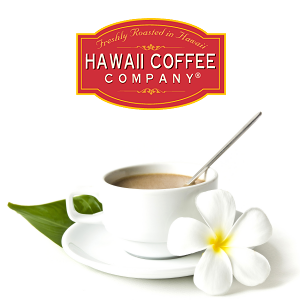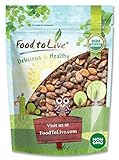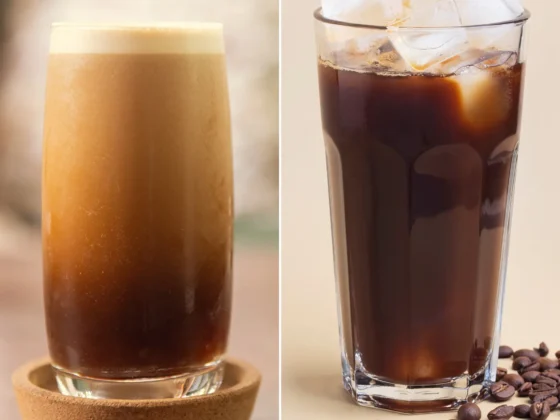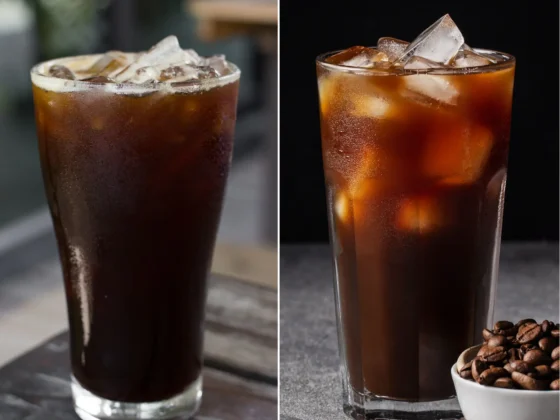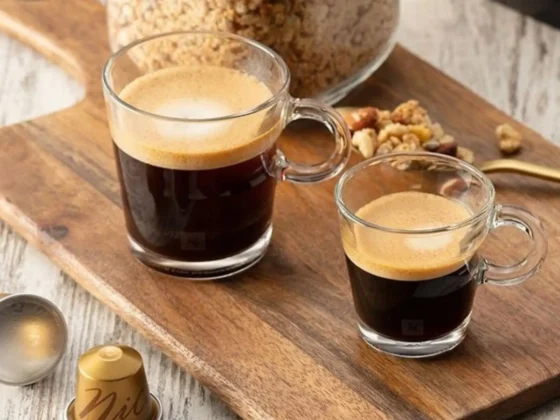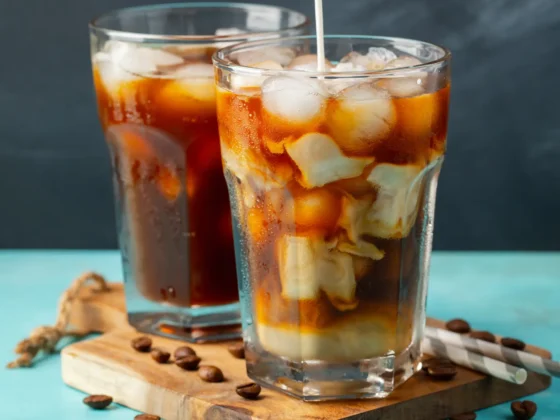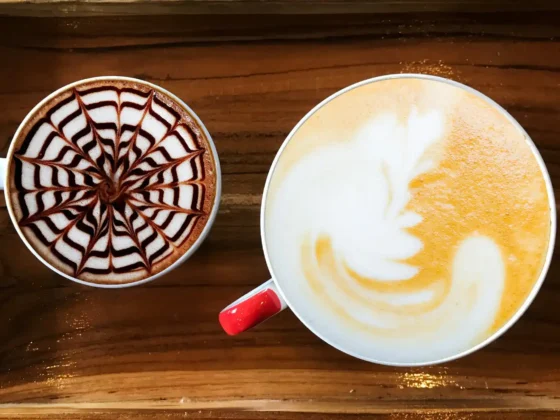As the day awakens and the world begins to stir, millions of us rely on the familiar ritual of brewing our morning coffee, a beloved beverage known for its invigorating qualities and intricate flavor profiles. But have you ever thought about adding an exotic twist to your regular cup of joe? Enter the world of cacao in coffee—a rich fusion of flavors that promises to take your coffee-drinking experience to new heights.
You might be asking, “What does cacao add to my coffee, and how does it compare to familiar ingredients like cocoa powder?” These are excellent questions, and you’re about to discover the answers. This article will take you on a sensory journey, exploring the symbiotic relationship between cacao and coffee, and the delightful complexities they bring when combined. It’s a world where the robustness of coffee meets the earthy tones of cacao, creating a beverage that is more than the sum of its parts. Whether you’re a casual coffee drinker or a seasoned barista, prepare to delve into the captivating blend these two ingredients.
Cacao in Coffee: Key Takeaway
- Cacao and Coffee – A Historical Alliance: The history of cacao goes back centuries, from traditional usage in Mesoamerican cultures to contemporary global trends. This natural product has been paired with coffee for its compatible flavors, creating a rich and indulgent beverage.
- Healthful and Energizing Brew: Cacao-infused coffee isn’t just a treat for your taste buds. The combination packs a potent nutritional punch, offering numerous health benefits, from antioxidants to mood and energy-boosting compounds.
- The Art of Cacao-Infused Coffee: Crafting the perfect cacao-infused coffee involves selecting the right beans, mastering brewing techniques, and experimenting with recipes. Each step contributes to a unique tasting experience.
- Understanding Flavor Profiles: Appreciating the flavor notes of cacao and coffee enhances your tasting experience. The flavors can complement each other, contrast, or add a new layer of complexity.
- Sustainability Matters: Ethical and sustainable practices in the cacao and coffee industries are crucial. As consumers, being aware of issues such as fair-trade, organic farming, and sustainability efforts can help influence the industry towards better practices.
History of Merging Cacao and Coffee
Delving into the history of cacao in coffee takes us back hundreds of years, and traverses continents. This delightful fusion we enjoy today is a result of age-old practices, rooted in the origins of both these beloved crops.
The Origins of Cacao and Coffee
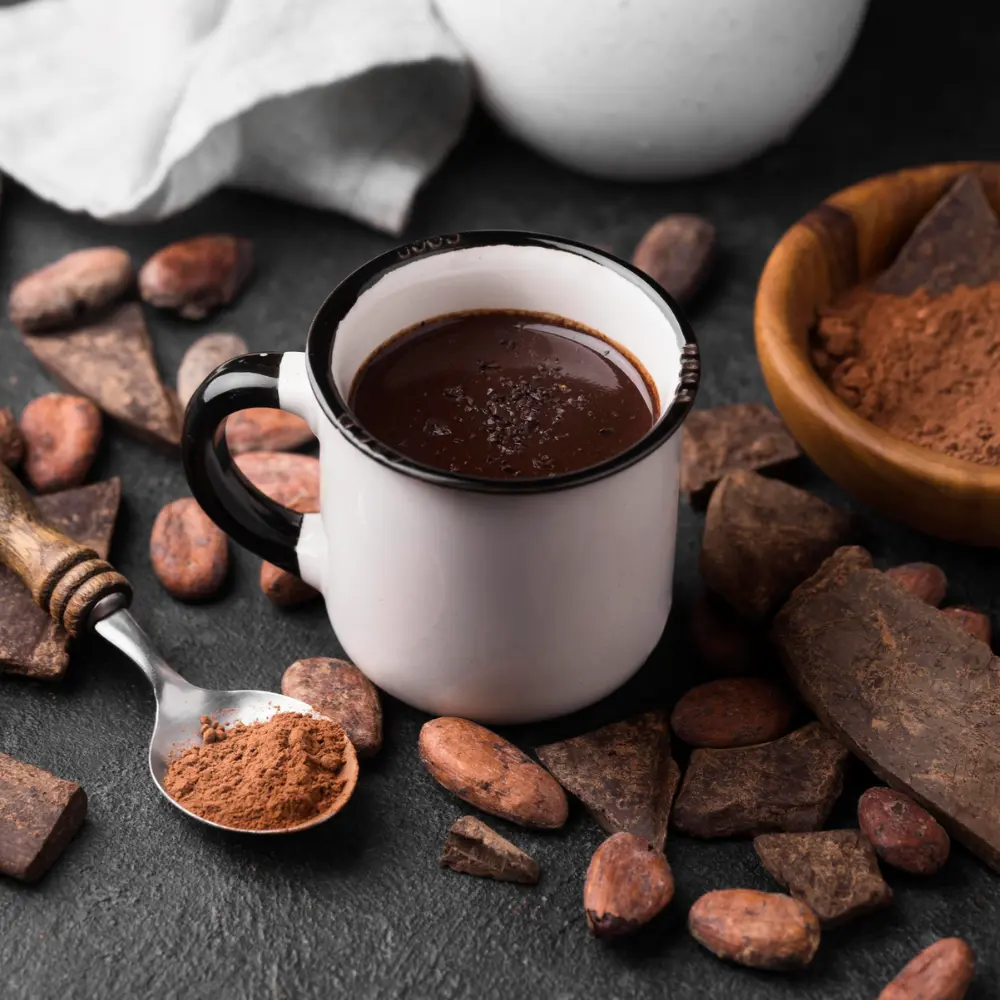
Coffee and cacao are both age-old plants that have been central to many cultures worldwide.
Coffee is believed to have originated in Ethiopia. The legendary tale tells of a shepherd named Kaldi who noticed his goats dancing energetically after eating the red fruit of a particular bush. Curious, he tasted the fruit himself and experienced the same energizing effect. Soon, monks from a nearby monastery discovered the beans and used them to create a hot beverage to keep them awake during long hours of prayer. Thus, coffee began its journey around the globe. (1)
Cacao, also known as the chocolate tree, on the other hand, has a rich history in the ancient civilizations of Central and South America. The Aztecs and Mayans used cacao beans as a form of currency, and in ceremonial beverages, they believed they provided divine wisdom. They ground the beans into a paste and mixed it with hot water, creating a bitter but invigorating drink.
What is Cacao? – A Deeper Look at Chocolate’s Forefather
An exploration into this chocolate tree takes us on a journey back in time, tracing the roots of one of the world’s most cherished confections: chocolate. But before it becomes the sweet, smooth treat we all adore, it starts as cacao, an often misunderstood and underappreciated gem in its own right.
Hailing from the tropical regions of Central and South America, the cacao tree, known scientifically as Theobroma Cacao, which fittingly translates to “Food of the Gods,” provides the primary ingredient for chocolate. (2) However, this isn’t your average tree. It’s a rainforest superstar, with the ability to grow under the cover of taller trees, thriving in the rich, fertile soils beneath the jungle canopy.
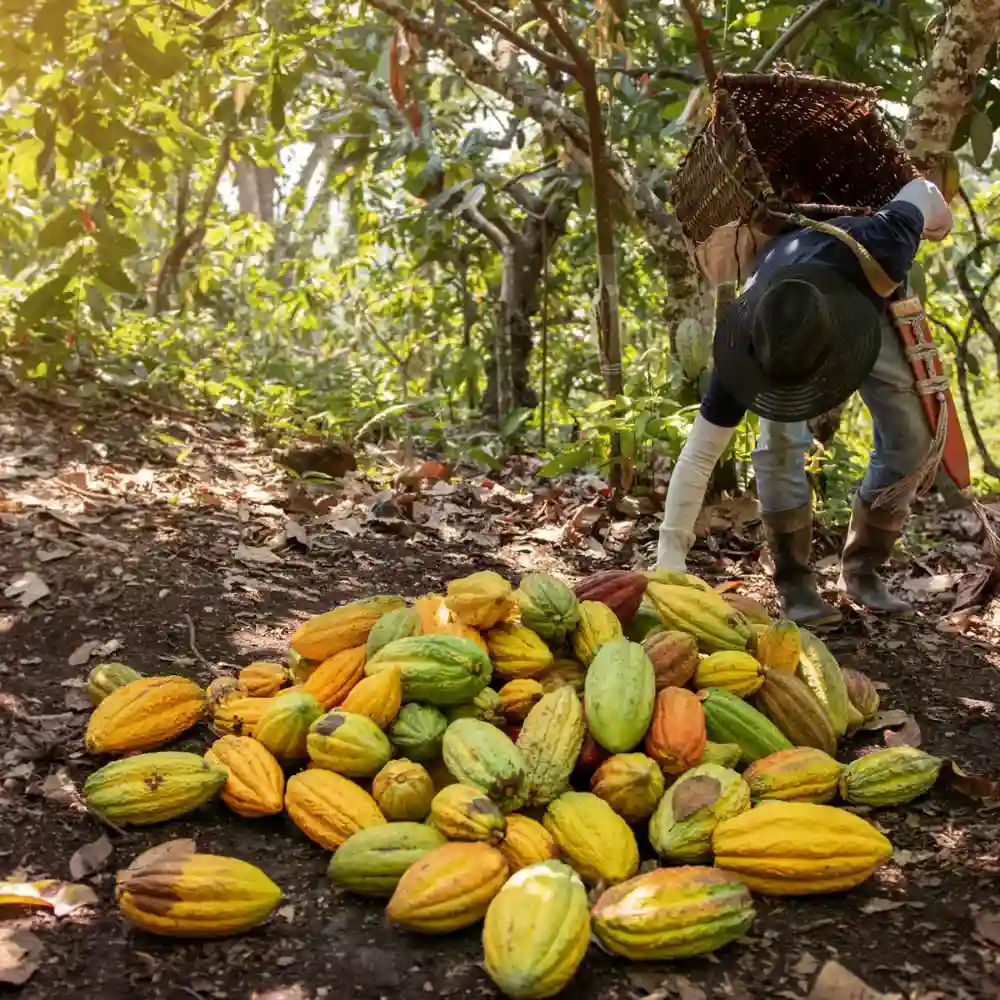
The true treasure of this tree is its fruit: a large, oval pod filled with a sweet, pulpy substance that houses the prized cacao beans. These beans undergo a multi-step process, including fermentation, drying, and roasting, to reveal their true potential. In their raw state, these beans offer a depth of flavor that’s both bitter and complex, showcasing earthy, fruity, and nutty notes.
Cacao nibs, derived from crushed beans, are a crunchy, nutritious superfood that’s gaining popularity in health circles, and when ground into a paste and processed further, they give birth to the chocolate we all know and love.
But, as we’ve discovered in our exploration of cacao in coffee, these mighty beans have uses far beyond confections. Whether mixed with coffee grounds or used as a garnish on a steaming latte, this chocolate tree adds a layer of sophistication and depth to our favorite caffeinated beverages. So next time you sip on a cacao-infused coffee, take a moment to appreciate the journey of the humble bean, from rainforest to coffee cup.
Traditional Usage of Cacao in Coffee
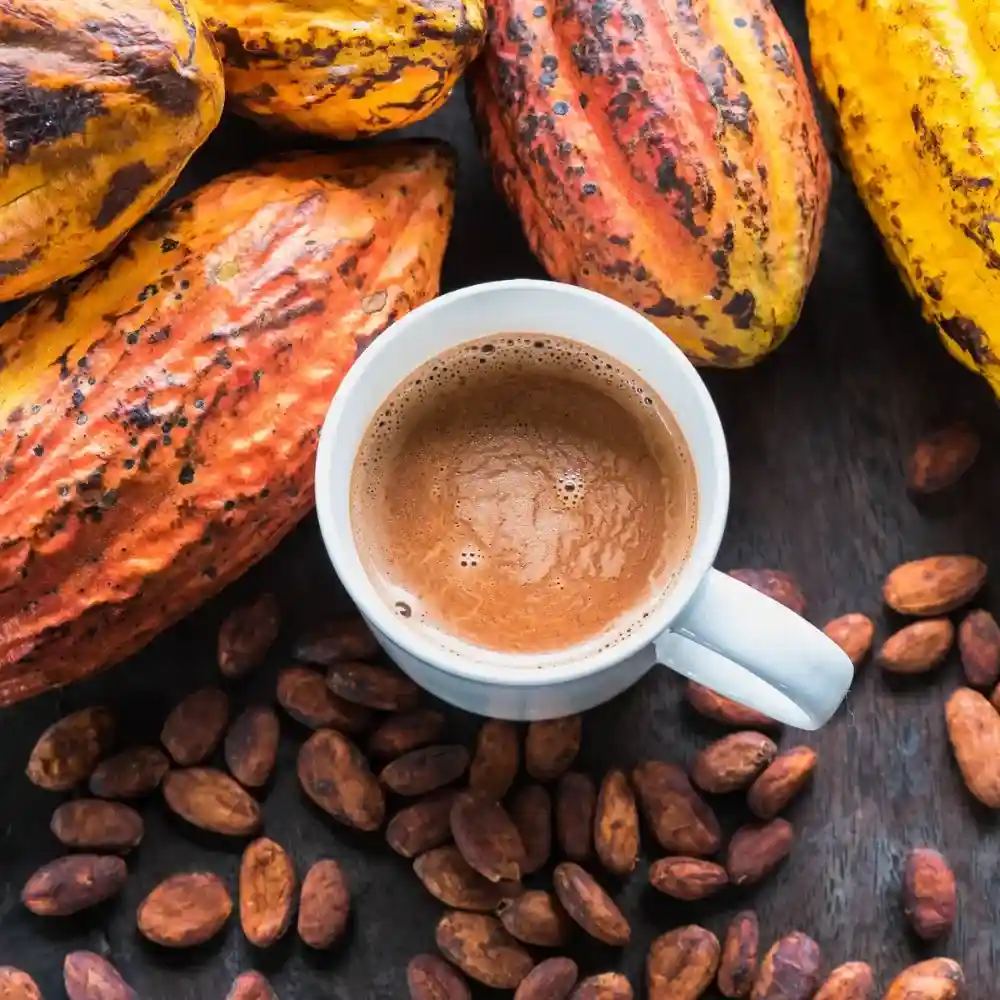
The fascinating journey of cacao and chocolate commenced with the arrival of the Spanish Conquistadors. From its origins, chocolate possessed a multifaceted nature, serving both as a medium of trade (in the form of cacao beans) and as a delectable beverage consumed by various Mesoamerican societies. However, the transformation of chocolate into the sweet concoction we recognize today can be traced back to the encounter between Spain and the Aztecs during the period of Spanish conquest.
Later, in the 17th century, Europeans began enjoying “Café Chocolat,” a drink made with coffee, chocolate (made from cacao), and sometimes milk. This practice evolved into what some parts of the world now call “Mochas,” a coffee drink with chocolate or cocoa.
Contemporary Trends in Cacao-Infused Coffee
Today, the fusion of cacao and coffee continues to evolve and captivate. Coffee connoisseurs and innovative baristas around the world experiment with different varieties of cacao and coffee beans, playing with roasting techniques and ratios to achieve the perfect balance of flavors.
Artisan coffee shops now offer cacao nib-infused cold brews and hot coffees with cacao infusion. Some also sprinkle cacao nibs on top of lattes and cappuccinos for an added layer of complexity and crunch.
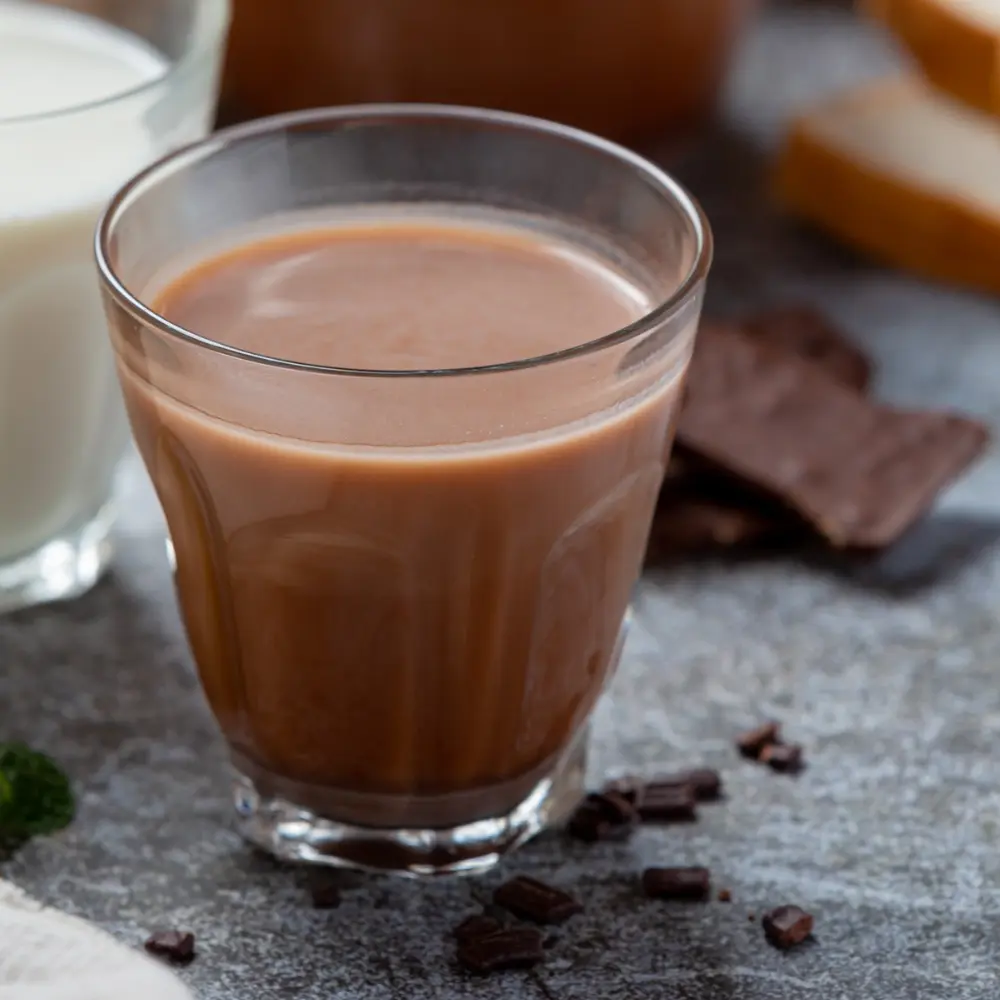
Home brewers aren’t left out of this trend either. With the advent of craft coffee culture and increased accessibility to high-quality beans, more and more coffee lovers are experimenting with adding cacao to their home brews. This takes the form of mixing it with coffee grounds before brewing or stirring in cacao powder after brewing for a richer, chocolatey experience.
The cacao in coffee trend is more than just a fad; it’s a testament to the enduring allure of these two crops and our ongoing desire to experiment with and enhance our sensory experiences.
Cacao vs Cocoa Powder

When it comes to adding a chocolatey touch to your coffee, you may find yourself wondering whether to reach for cacao or cocoa powder. Although they may sound similar, there are distinct differences between the two in terms of production, nutritional content, and flavor profile. Let’s explore these differences to help you make an informed choice.
Unveiling the Production Process
- Cacao: Cacao is the purest form of chocolate you can consume. It’s derived from the Theobroma Cacao tree and involves minimal processing. The beans are harvested, fermented, dried, and then cold-pressed to remove the fat. What remains is raw cacao powder, which is bitter but packed with nutrients and natural compounds.
- Cocoa: Cocoa also starts from the same cacao beans, but it undergoes a different processing method. Instead of cold-pressing, the beans are roasted at high temperatures. This process results in a sweeter flavor, but it also strips away some of the nutritional value. Cocoa powder often also undergoes Dutch processing or alkalinization to reduce acidity, further altering its nutritional profile.
Comparing Nutritional Value
- Cacao: Cacao is a powerhouse of nutrients. It’s rich in fiber, protein, and monounsaturated fats. It’s also an excellent source of minerals like magnesium, iron, potassium, and calcium. Plus, it is loaded with antioxidants and natural compounds like flavonoids that have potential health benefits.
- Cocoa: While cocoa is still nutritious, it generally has a lower nutrient content due to the heat involved in its processing. However, it’s still a good source of fiber, protein, and various minerals. Cocoa also contains antioxidants, but usually less than raw cacao due to the roasting process.
A Tale of Two Flavors
- Cacao: Cacao has a strong, bitter flavor that can be an acquired taste. However, this raw, earthy taste can add a depth of flavor to your coffee, making it a perfect match for coffee lovers who enjoy dark roasts or who don’t add sweeteners to their brew.
- Cocoa: Cocoa has a milder, sweeter taste, thanks to the roasting process. If you prefer a more traditional, sweet, and creamy chocolate flavor in your coffee, then cocoa might be the choice for you.
Choosing between cacao and cocoa ultimately boils down to personal preference, your desired nutritional benefits, and the flavor profile you’re aiming for in your coffee. No matter which one you opt for, both can bring an exciting twist to your coffee experience.
Health Benefits of Cacao in Coffee

With the fusion of cacao and coffee, not only do we get a delightful burst of flavors but also an enhanced nutritional profile that can boost our health in several ways. Let’s delve into the health perks this powerful combination has to offer.
Nutritional Value of Cacao and Coffee
Cacao and coffee, in their pure forms, are packed with a plethora of essential nutrients that can benefit our health:
- Coffee: Known for its high caffeine content, coffee also contains essential nutrients such as B vitamins, manganese, and potassium. It’s rich in antioxidants like chlorogenic acid that can help combat oxidative stress and inflammation.
- Cacao: This potent superfood is rich in antioxidants, notably flavonoids, which have been linked to numerous health benefits. It’s also an excellent source of magnesium, iron, and fiber. The primary antioxidant found in cacao, theobromine, also offers a mild stimulant effect, less intense than caffeine.
Potential Health Benefits of Cacao in Coffee

Pairing cacao and coffee does more than just create a flavor explosion; it also offers a host of potential health benefits:
- Rich in Antioxidants: Both cacao and coffee are loaded with antioxidants, compounds that help fight off harmful free radicals in the body. This combination could potentially offer protective effects against chronic diseases such as heart disease and cancer.
- Improved Cognitive Function: The caffeine in coffee and theobromine in cacao can stimulate brain function, potentially improving concentration, mood, and overall cognitive performance.
- Heart Health: Flavonoids in cacao are known to help lower blood pressure and improve blood flow to the brain and heart, promoting cardiovascular health.
- Gut Health: Some studies suggest that the dietary fiber in cacao may aid in digestion and promote a healthy gut microbiome.
Cacao and Coffee: Boosting Mood and Energy
There’s no denying the mood-enhancing and energy-boosting effects of a good cup of coffee. Caffeine’s stimulant properties help combat tiredness and improve focus and alertness. But when you add cacao to the mix, it takes this energy boost to another level.
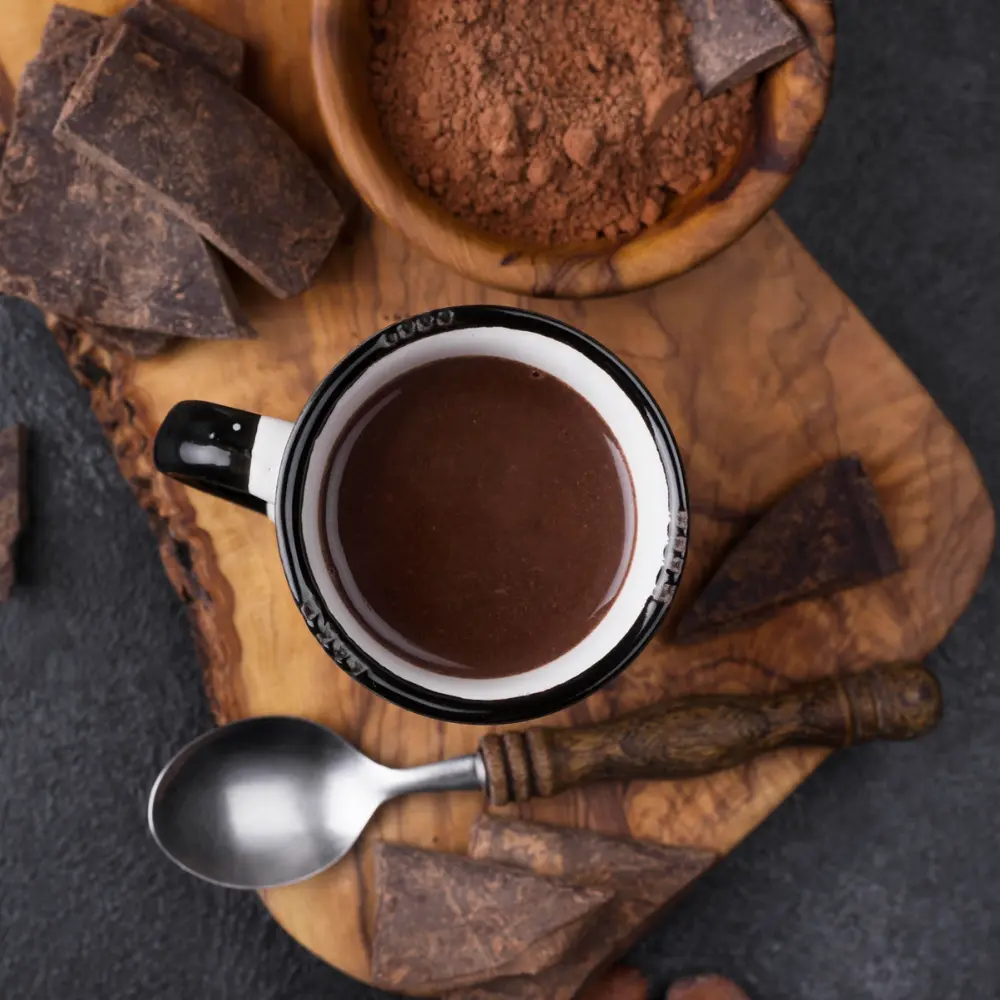
Theobromine in cacao, while milder than caffeine, has a longer-lasting effect, providing a smooth, enduring energy lift without the jitters or crash often associated with high caffeine intake.
Additionally, cacao is known to boost serotonin and endorphin levels in the brain, chemicals that make us feel happier and more relaxed. Thus, the cacao-coffee duo could be your ideal pick-me-up, offering the perfect balance of invigoration and bliss in each cup.
Preparing Your Cacao-Infused Coffee
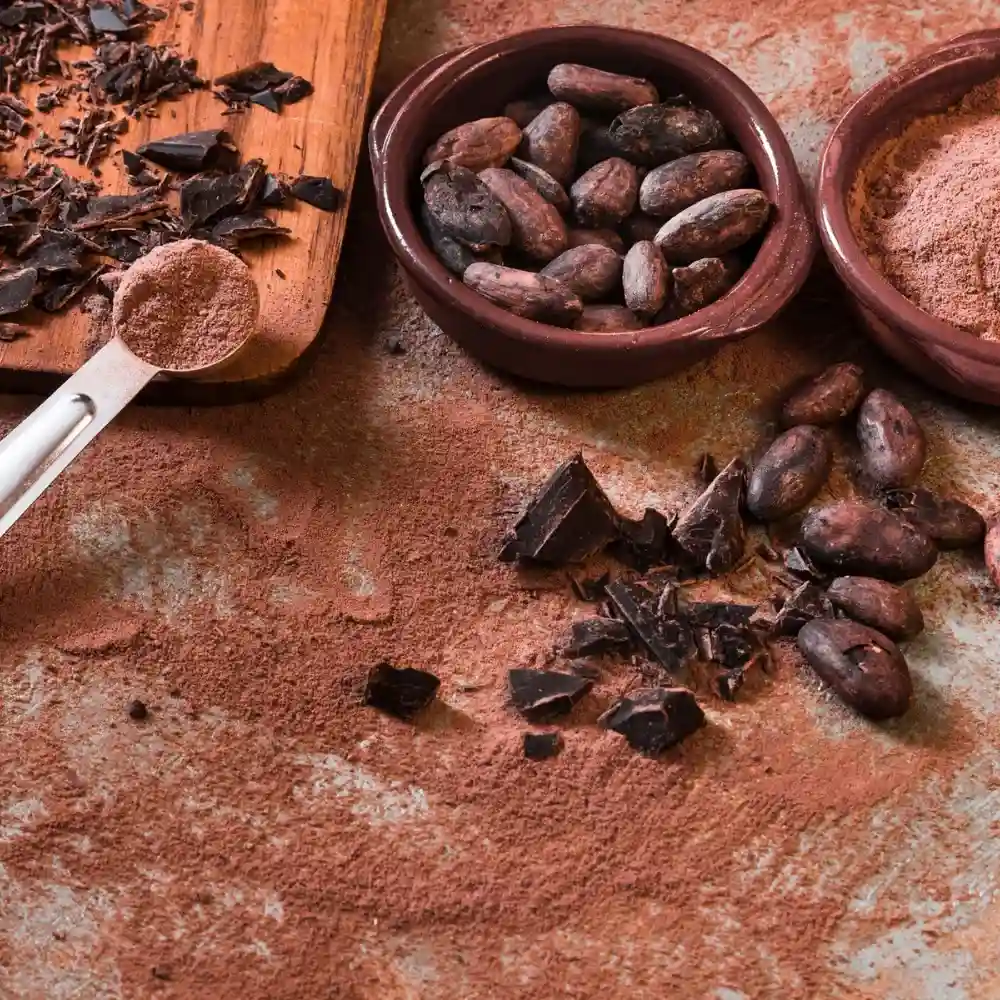
The beauty of merging cacao and coffee lies not just in the unique flavor profile, but also in the process of crafting your own brew. In this section, we will guide you through selecting the perfect beans, mastering brewing techniques, and even experimenting with delightful recipes.
Choosing the Right Coffee and Cacao Beans
Selecting quality beans is the cornerstone of any great brew. Here are some key considerations:
- Coffee Beans: Choose high-quality, freshly roasted beans for the best flavor. Depending on your taste preference, you could opt for either a light, medium, or dark roast coffee. Regions such as Ethiopia, Colombia, and Brazil produce excellent coffee with distinct flavor notes.
- Cacao Beans: Raw cacao nibs or beans are the best choices for a pure, chocolatey taste. Organic, fair-trade options are often a good bet, providing not just quality, but a sustainable choice. Cacao beans from Peru, Ecuador, and the Dominican Republic are renowned for their superior quality and flavor.
Remember, finding the right beans is a personal journey. It may take some trial and error to find your perfect match, but the exploration is part of the fun.
Brewing Techniques for Cacao-Infused Coffee
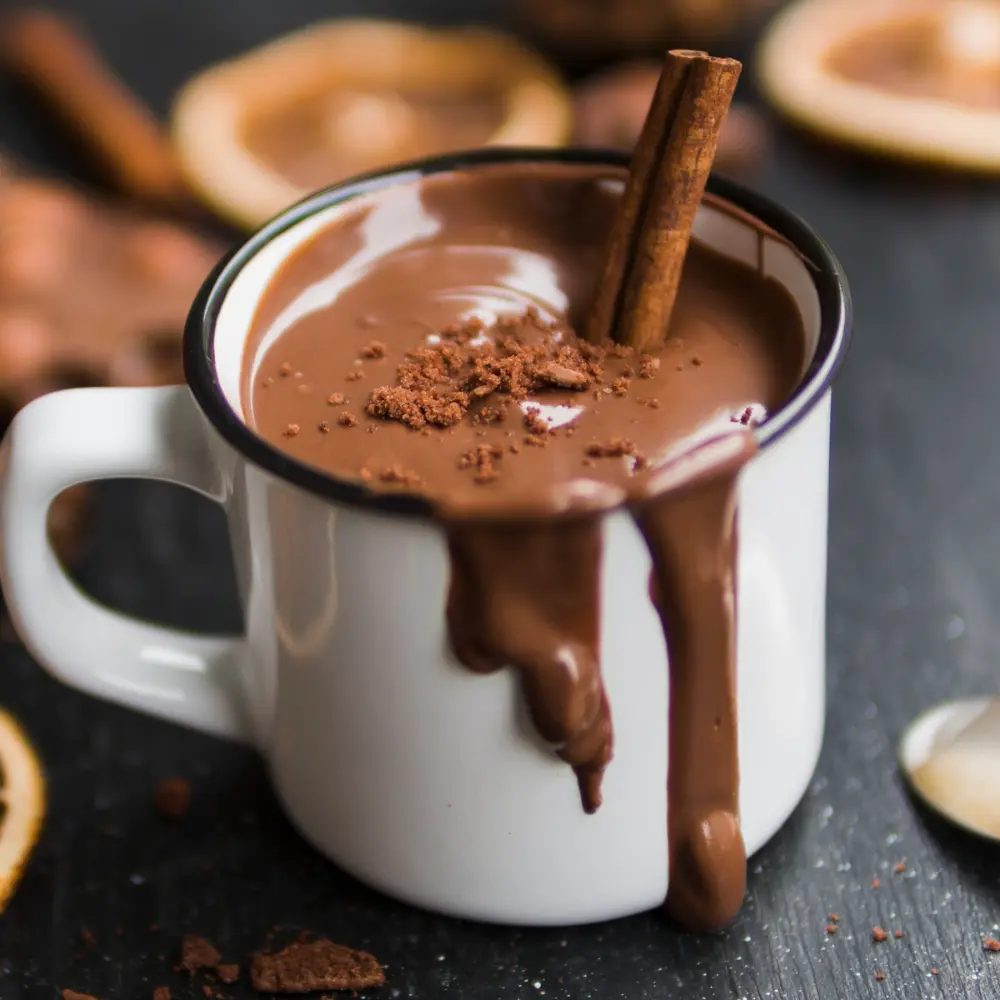
When it comes to brewing your concoction, there are several methods you can employ:
- Cacao Nib Infusion: This involves adding cacao nibs to your coffee grounds before brewing. Use a ratio of about 1:4 cacao nibs to coffee for a subtly chocolatey brew.
- Cacao Brew and Mix: Brew your coffee and cacao separately, then combine the two. This method lets you control the brew, allowing you to fine-tune the flavor balance.
- Cacao Powder Stir-In: Simply brew your coffee as usual, then stir in cacao powder to taste. This is an easy way to add cacao hit to your coffee and works particularly well with lattes or mocha coffees.
Recipes: Creating Delicious Cacao-Coffee Brews
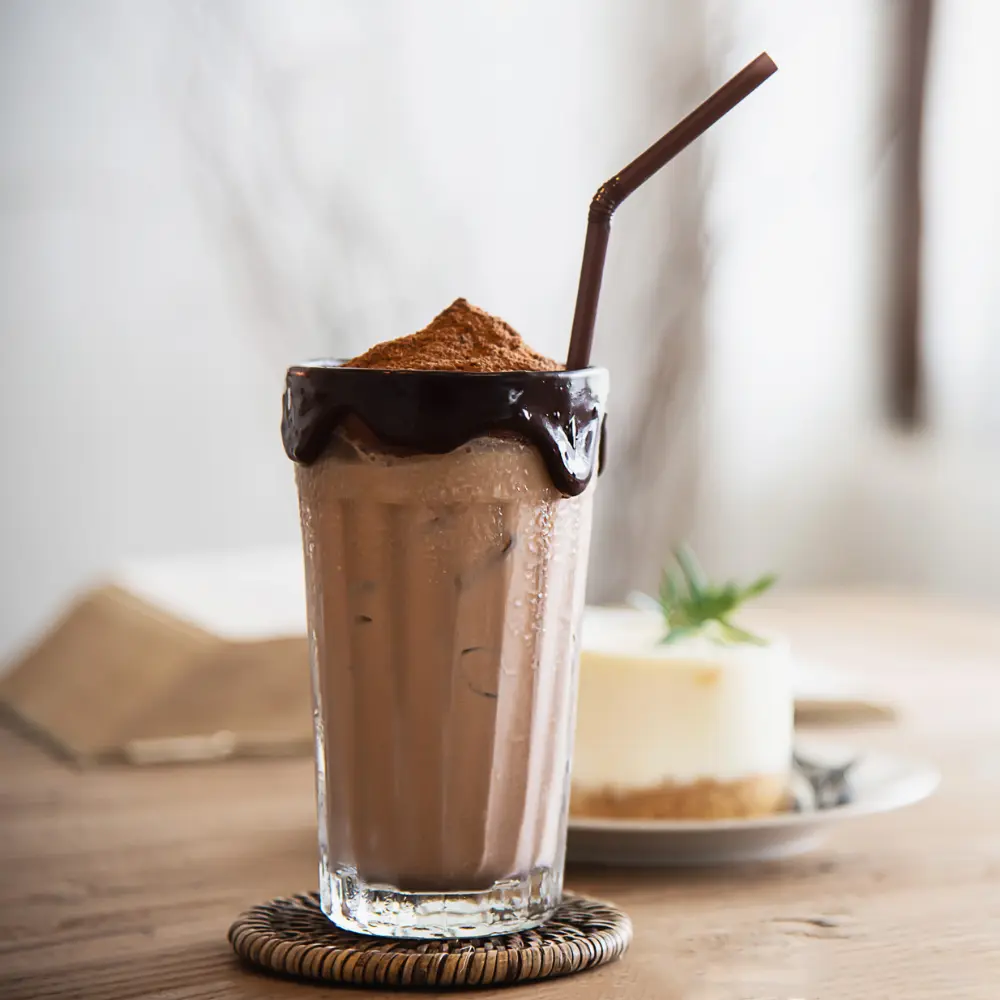
Ready to start experimenting with your cacao-infused coffee? Here are a couple of recipes to get you started:
- Cacao-Coffee Cold Brew: Mix 1 cup of coarse ground coffee with 1/4 cup of crushed cacao nibs. Add to a cold brew pitcher, fill with cold water, and let steep in the fridge for 16-24 hours. Strain and serve over ice with a splash of milk if desired.
- Classic Mocha: Brew a strong cup of your favorite coffee. In a saucepan, heat 1 cup of milk and 2 tablespoons of cacao powder, whisking until well combined and frothy. Combine the milk and coffee, sweeten to taste, and enjoy!
Brewing the perfect cup of cacao-infused coffee may require some experimentation, but the process—and the resulting flavors—make it all worth it.
Tasting Profiles of Cacao and Coffee
Just as a skilled painter creates a masterpiece by mixing various colors on a palette, understanding the taste profiles of these two can help us craft a truly transcendent beverage. Let’s dive into the world of flavor notes, pairing possibilities, and how this chocolate tree can transform your regular cup of joe.
Understanding Coffee and Cacao Flavor Notes

Coffee and cacao, despite being unique in their flavor profiles, share several overlapping taste notes that make them such an exquisite pairing. Here’s what you can typically expect:
- Coffee: Depending on the region and roast, coffee can exhibit a wide range of flavor profiles. It can be fruity (berries, citrus, apple), sweet (chocolate, caramel, honey), floral, nutty, or spicy. It can also have winey, earthy, or herbal undertones. The acidity, body, and aroma further contribute to the overall tasting experience.
- Cacao: Just like coffee, cacao flavor profiles vary based on origin, type, and processing. It can be earthy, nutty, or have notes of red fruit, berries, or tropical fruit. It might also exhibit flavors of caramel, honey, vanilla, and even floral or winey undertones. Its signature chocolatey flavor combines with a characteristic bitterness, resulting in a deeply layered taste experience.
How Cacao Modifies the Coffee Experience
Introducing cacao to your coffee doesn’t merely add a chocolatey note—it fundamentally enhances the taste experience. Here’s how:
- Complements and Contrasts: As discussed earlier, the chocolatey, earthy, and fruity notes of cacao can both complement and contrast coffee’s flavors. It can enhance inherent chocolatey notes in some coffee, while it can offer a delightful contrast to the brighter, citrusy notes of other varieties.
- Smoothness: It can also add a velvety smoothness to your coffee, tempering acidity and adding body.
- Complexity: The addition of cacao brings a new layer of complexity to your brew. With each sip, you can explore the ways the flavors of these two mingle and interact.
Pairing Cacao with Different Coffee Types

Creating the perfect cacao coffee pairing is an art that can take some practice. Here are some guidelines to start your journey:
- Dark Roast Coffee: These robust, full-bodied coffees with notes of chocolate or spice often pair well with the earthy, nutty flavors of cacao.
- Medium Roast Coffee: The balanced flavor and acidity of a medium roast can be beautifully enhanced by cacao’s slight bitterness and fruitiness.
- Light Roast Coffee: If your light roast coffee has fruity or floral notes, it can create a delightful contrast with the earthy, chocolatey profile of cacao.
The art of pairing these two is a journey full of delicious exploration. By understanding their distinct flavor profiles and how they interact, you can unlock countless delightful combinations to tantalize your palate.
Sustainability in the Cacao and Coffee Industries
In a world where conscious consumerism is gaining prominence, it’s important to address the topic of sustainability in the cacao and coffee industries. Let’s explore the ethical considerations involved, the drive towards more sustainable practices, and some brands leading the way in this realm.
Ethical Considerations in Coffee and Cacao Production
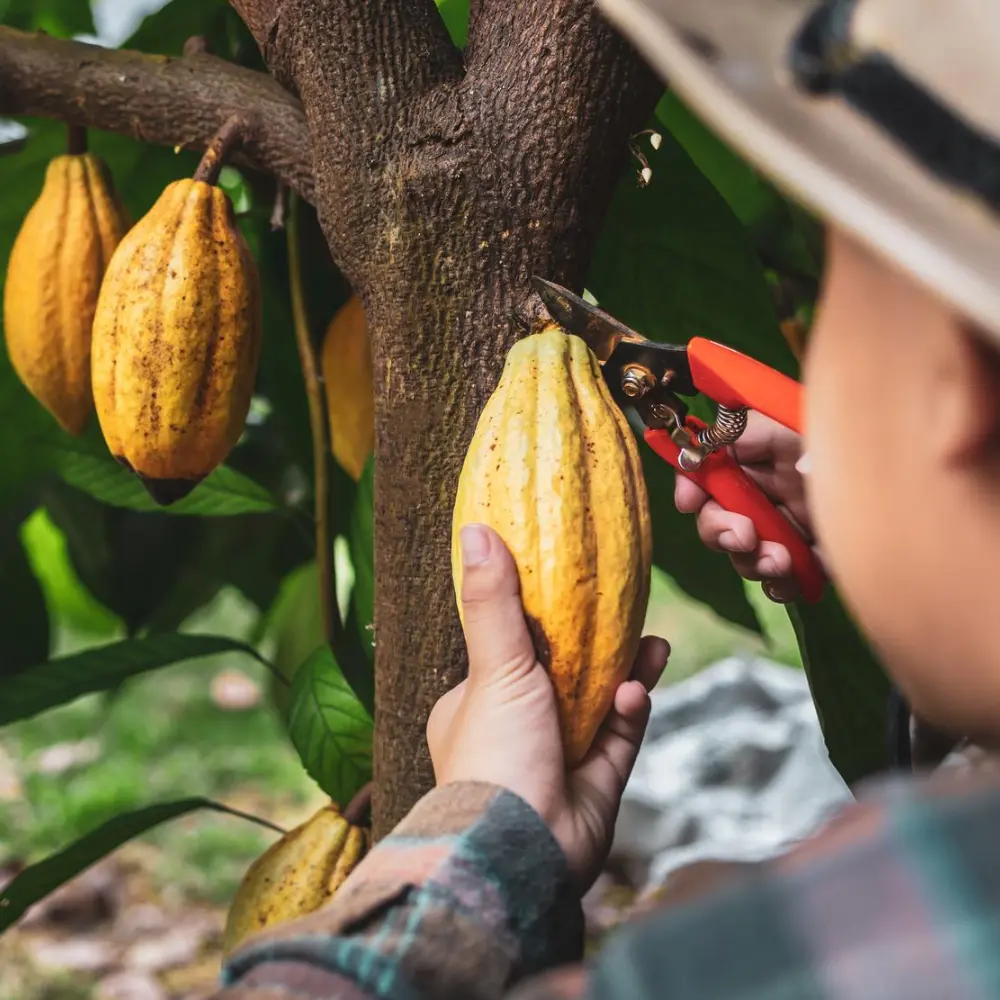
The journey of coffee and cacao from farm to cup is a complex one, involving a myriad of processes and participants. However, these industries have been marred by ethical concerns, including:
- Labor Practices: Both industries have faced scrutiny over exploitative labor practices, including child labor and underpayment of workers.
- Environmental Impact: The environmental footprint of these industries is significant, with deforestation, pesticide use, and water pollution being key issues.
- Economic Inequality: Small-scale farmers often receive a small fraction of the profits, despite being integral to the production process.
These challenges underscore the need for ethical sourcing and fair-trade practices in both coffee and cacao production.
Promoting Sustainable Practices in Both Industries

As we become more aware of these ethical considerations, efforts to promote sustainability in these two industries have grown. Here are some key strategies:
- Fair Trade Certification: This certification ensures farmers are paid a minimum price for their products, promoting better living conditions and prohibiting child labor.
- Organic Farming Practices: These practices emphasize the use of natural fertilizers and pest control methods, reducing the environmental impact.
- Shade-Grown Production: Both ingredients can be grown under the forest canopy, a practice that preserves biodiversity and combats deforestation.
- Direct Trade: Some companies are bypassing the traditional supply chain and working directly with farmers, ensuring a fairer distribution of profits.
Case Studies: Brands Leading in Sustainability
Several brands are leading the way in promoting sustainable practices:
- Equal Exchange: This cooperative sources fair trade and organic coffee and cacao from small farmer cooperatives, fostering sustainable farming practices and fair compensation.
- Tony’s Chocolonely: This Dutch chocolate company is on a mission to make 100% slave-free the norm in chocolate, working directly with cacao farmers in West Africa.
- Counter Culture Coffee: This U.S.-based coffee company focuses on sustainability and transparency, sourcing coffee directly from farmers and publishing yearly sustainability reports.
- Alter Eco: Known for its organic, fair-trade chocolate, Alter Eco sources cacao from farmer-owned cooperatives, using compostable packaging and offsetting its carbon emissions.
The road to fully sustainable and ethical cacao and coffee industries is long, but with continued efforts and increased consumer awareness, we can contribute to making a meaningful impact. As you savor your next cup of joe, consider the journey it’s taken and the power you have to influence that journey for the better.
Conclusion
Our journey through the rich tapestry of cacao in coffee has allowed us to dive into the complexities of flavor, tradition, and sustainability within these two intertwined industries. We’ve traversed the histories of both ingredients, understanding the timeless appeal of their union, and have analyzed the distinct characteristics of cacao vs cocoa powder, underlining the choice that each one of us has in enhancing our coffee experience.
Along the way, we’ve also gained insights into the health benefits offered by the cacao-coffee combination, explored the art of crafting the perfect brew, and appreciated the importance of sustainable and ethical practices in cacao and coffee production.
So, the next time you reach out for a coffee mug, consider the fascinating journey you’ve embarked upon in this article. Perhaps you might even find yourself reaching for some cacao to enrich your coffee further. After all, as we’ve discovered, this combination isn’t merely about creating a beverage—it’s about appreciating a confluence of history, flavor, health, and ethics in our everyday cup of coffee.
Whether you prefer the raw, earthy punch of cacao or the familiar, gentle sweetness of cocoa powder, there’s no denying the allure of this delightful duo. So, go ahead—take a sip, savor the richness, and enjoy the flavorful fusion of these two delicious ingredients.
FAQ
How can you prepare cacao-infused coffee at home?
Preparing cacao-infused coffee at home involves selecting quality coffee and cacao beans, using preferred brewing techniques, and following specific recipes for desired taste profiles.
How does the taste of coffee change with the addition of cacao?
The addition of cacao introduces a new layer of complexity to the coffee's flavor, often contributing a rich, chocolatey undertone that enhances the overall taste experience.
How are the cacao and coffee industries working toward sustainability?
The cacao and coffee industries are promoting sustainability through initiatives like fair-trade certification, organic farming practices, shade-grown production, and direct trade partnerships.


